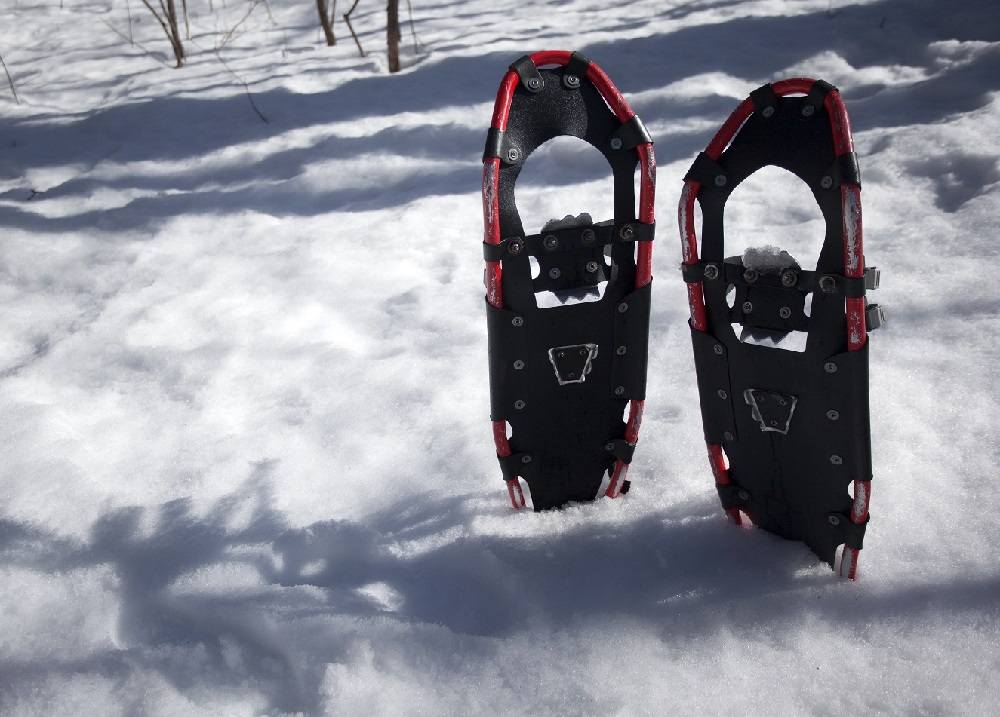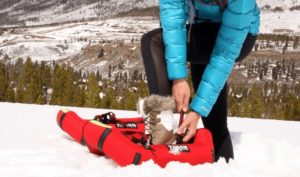Snowshoeing is a great way to improve your health and incorporate a fun activity into your exercise and fitness regime.
This popular winter sport is easy to learn, is ideal for all ages and abilities, requires minimal equipment, and will enhance your overall fitness in many ways.
Getting Started with Snowshoeing
Before strapping on the snowshoes, do some gentle stretching to warm up the muscles in your legs, arms and back. Snowshoeing is like strenuous walking so you want to be limber before heading out.
You may want to start with a groomed trail, many of which are found at ski resorts and cross-country ski areas across the U.S. and Canada. Breaking a new trail in fresh snow is more difficult and makes progress much slower but also intensifies the workout.
Start with slow footsteps to determine how well the snow will support your weight before increasing to a comfortable pace that gets your heart rate going. Swinging your arms or using poles will increase the number of muscles used and make the exercise more beneficial.
Health Benefits of Snowshoeing
Snowshoeing is a great low-impact aerobic exercise that burns more calories than running or walking at the same speed. You can burn anywhere from 400-900 calories per hour doing this sport, depending on the terrain, speed and whether poles are used.
Any aerobic exercise will strengthen your heart and increase your stamina. You will also feel the effects in your legs, as your hip flexors, quadriceps and calves get a workout. Adding poles will strengthen the muscles in your back, shoulder and arms. To top it off, a jaunt in the snow is a great stress reliever.
What to Wear, What to Bring
You will want to dress in layers and wear lightweight, waterproof winter boots or hiking boots. Snowshoe bindings vary but are generally simple and fit over most boots. You may opt for specialized winter wear offered at many stores but long underwear and comfortable, breathable clothes will work just as well. Gaiters are recommended to keep the snow out of your boots and keep your pants dry from kicked up snow.
Your snowshoes should be appropriate for the terrain and use. A recreational snowshoe is good if you want to stick to groomed trails and gentle terrain. If you want to try the backcountry, a mountaineering snowshoe is better. If you really enjoy the sport and want to get serious, there are even racing snowshoes.
Bring along some water to avoid dehydration and if you want to make a morning or day of it, bring along food to ensure you have the energy to get home.
Get Going
You may want to check with your doctor before starting this sport for exercise but once you get started, you will be glad you did. Snowshoeing will make your muscles and heart stronger and will be a great addition to your diet and exercise plan.


